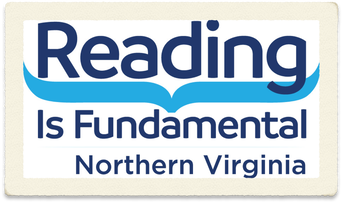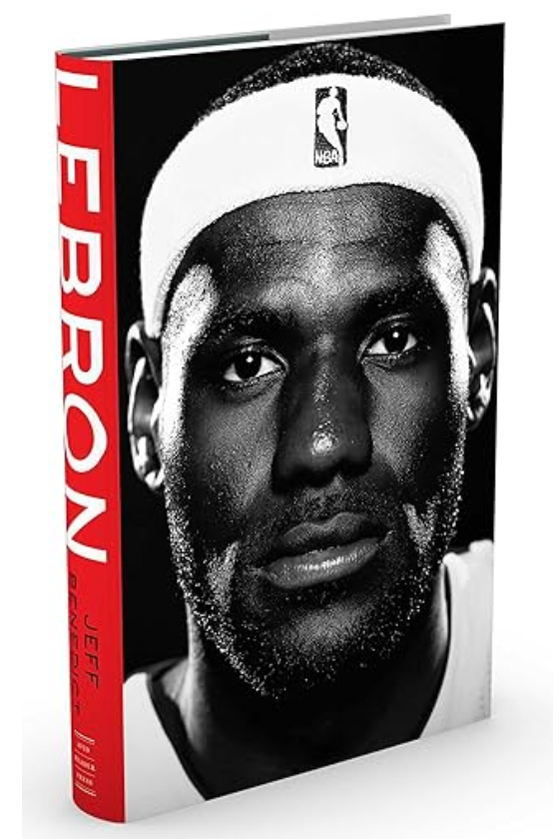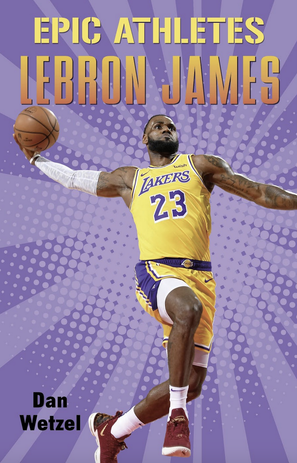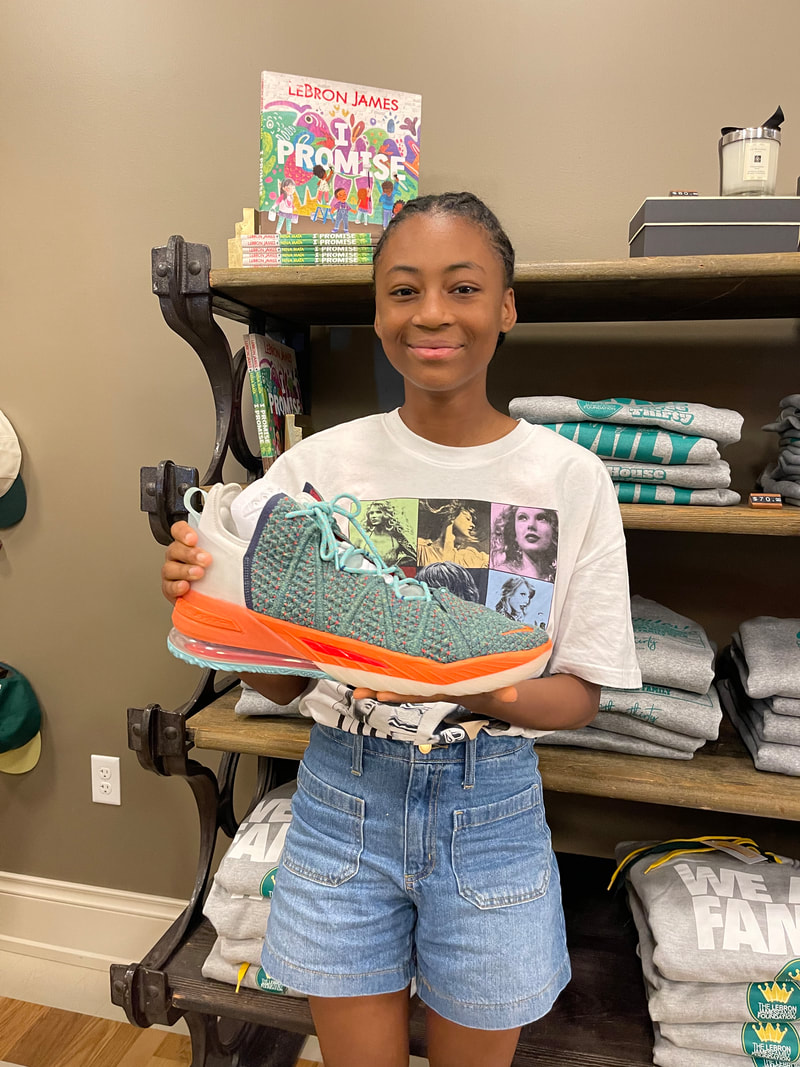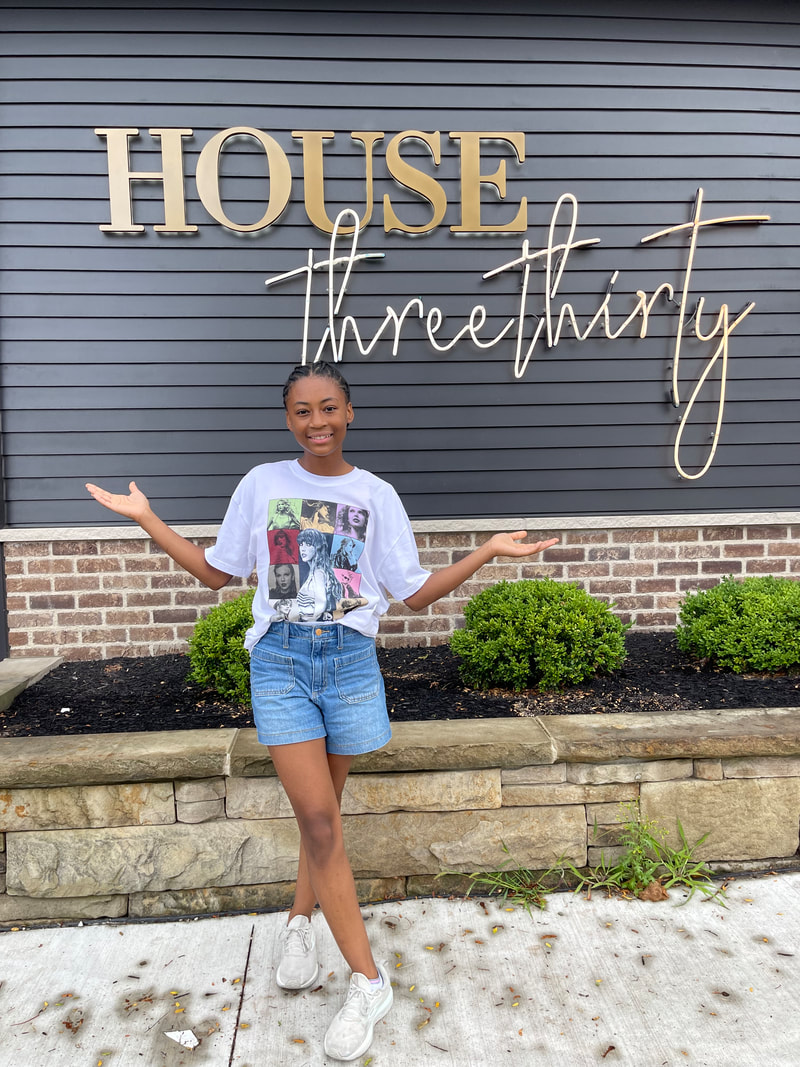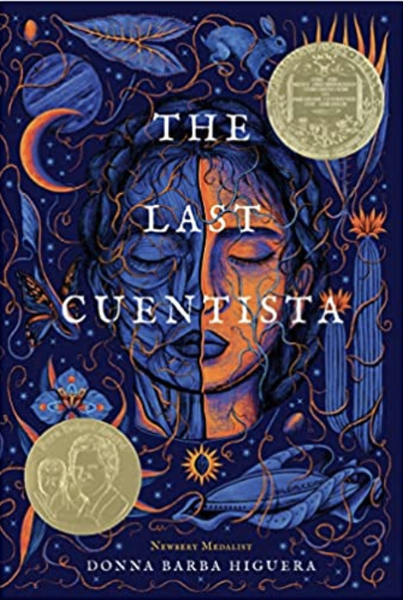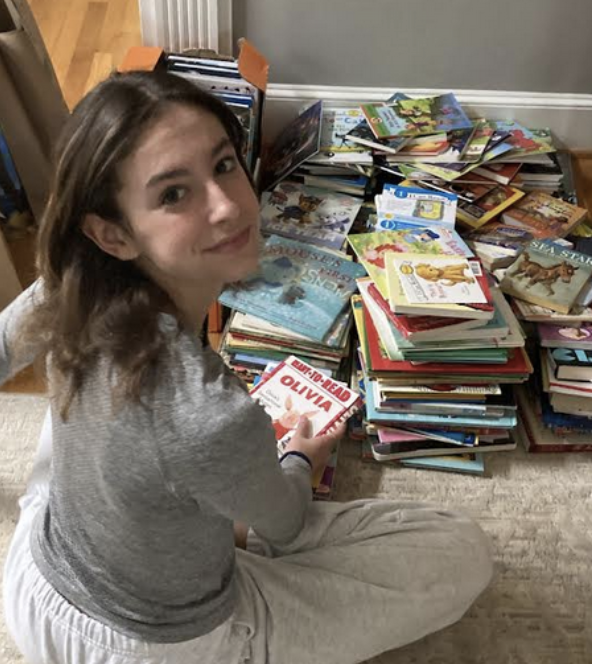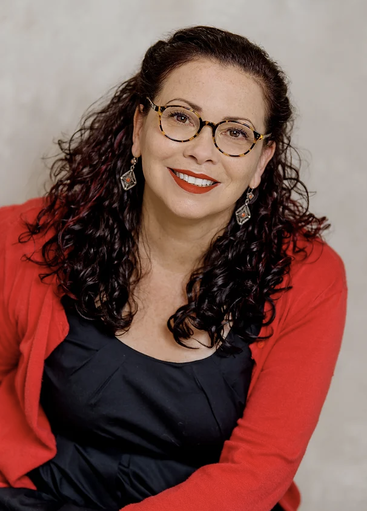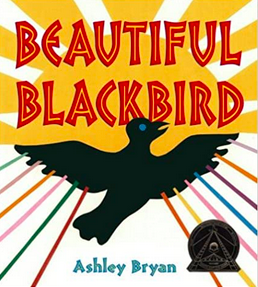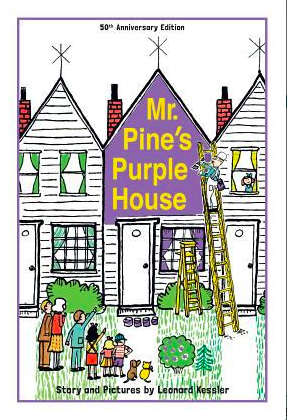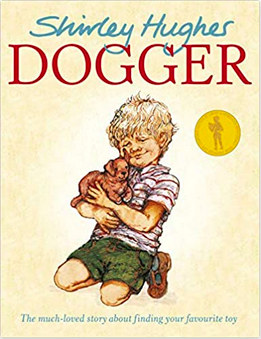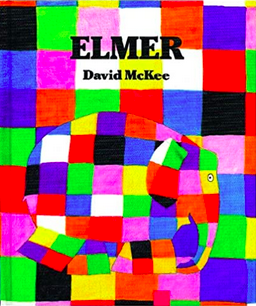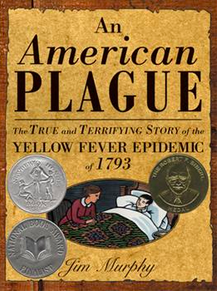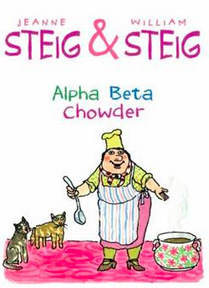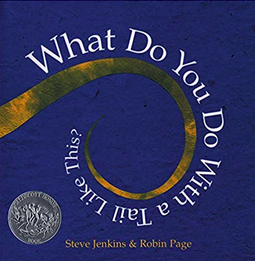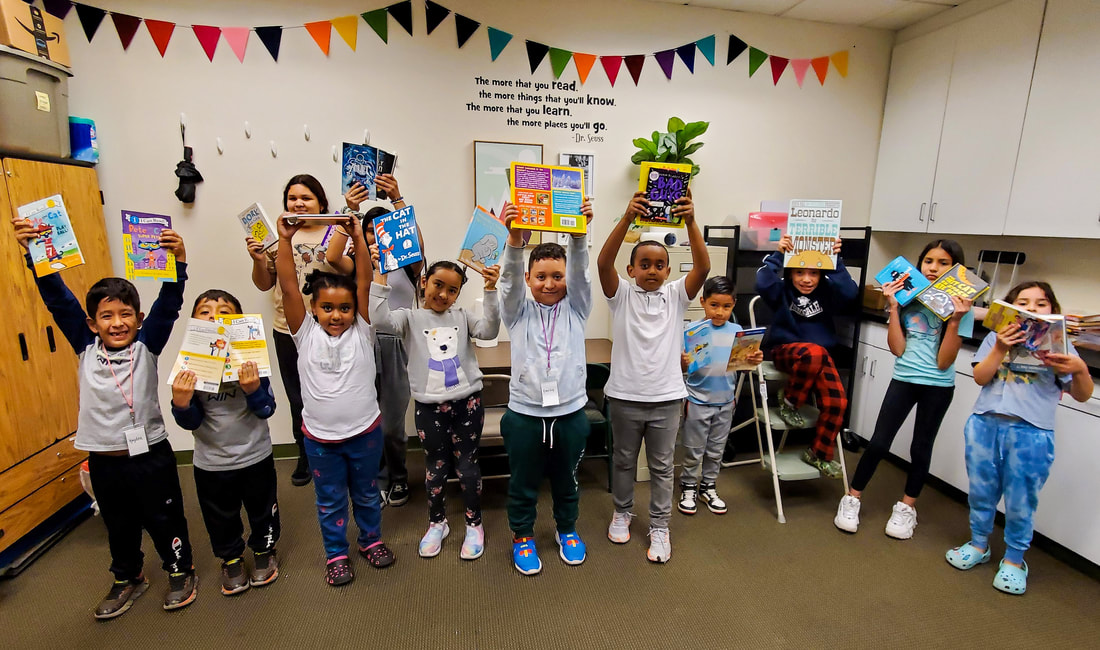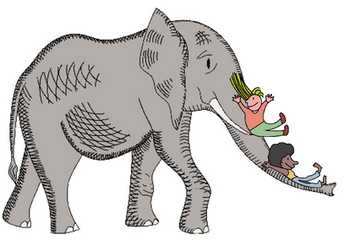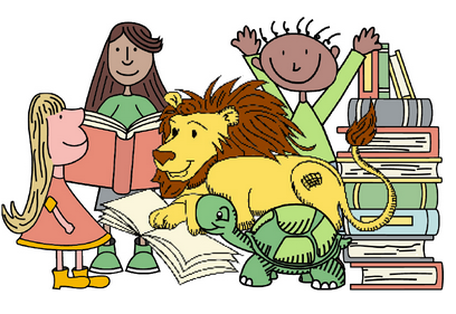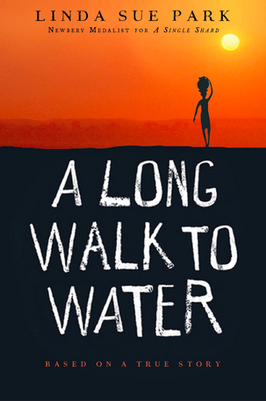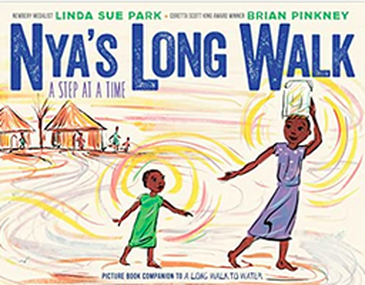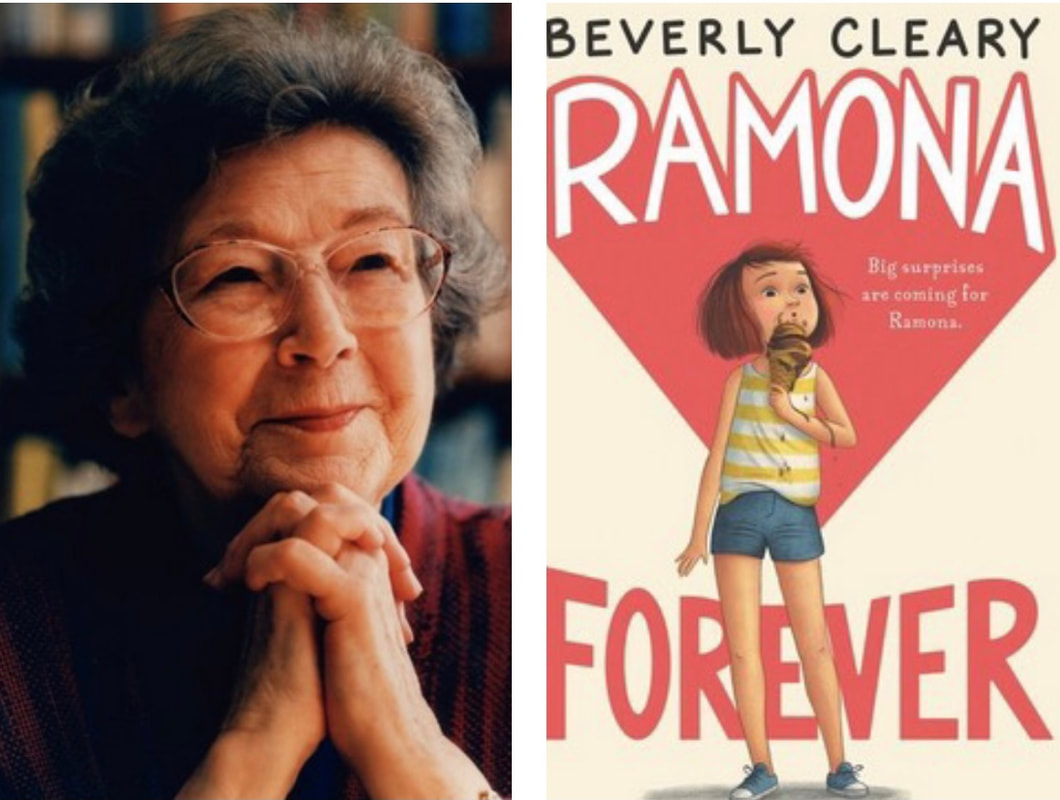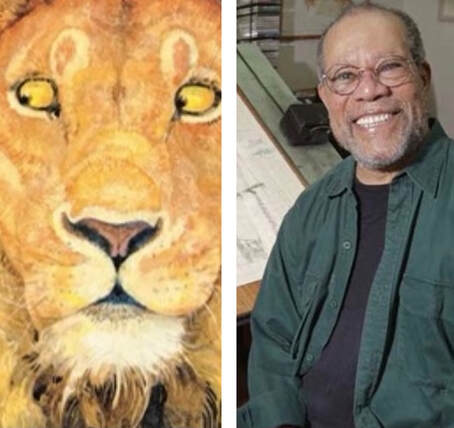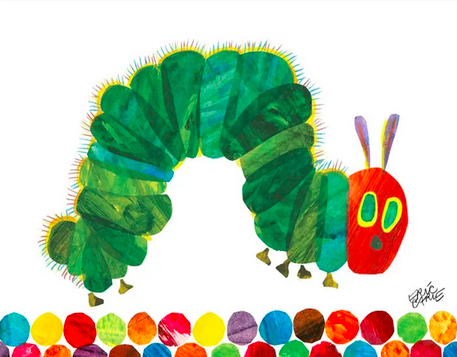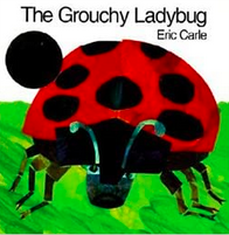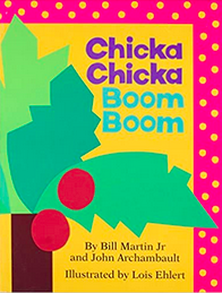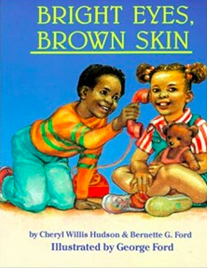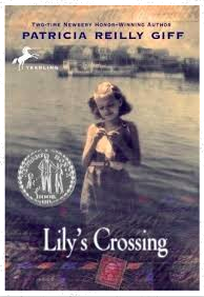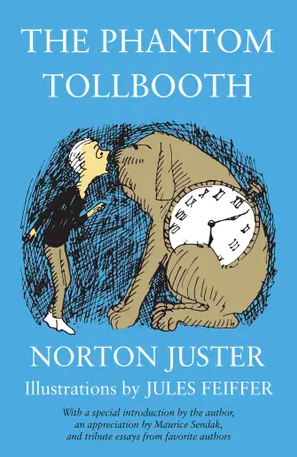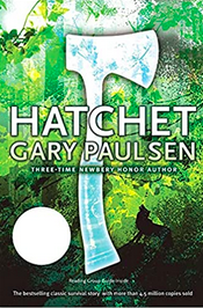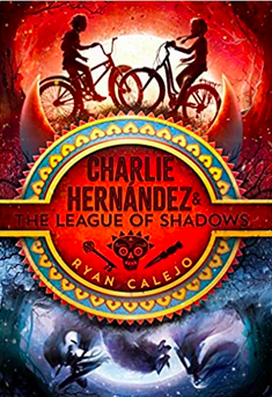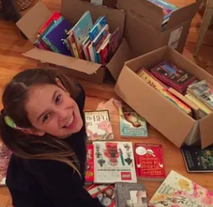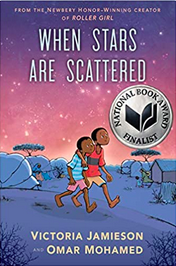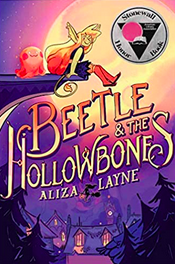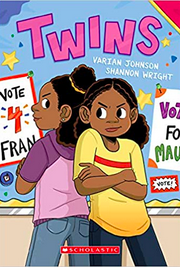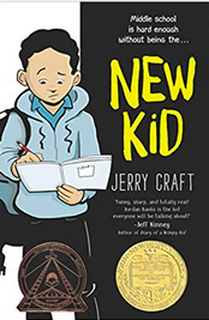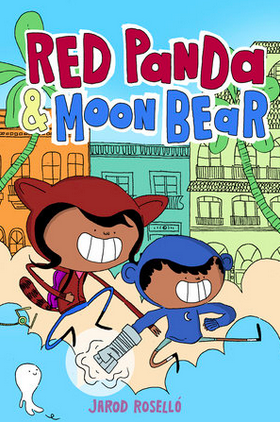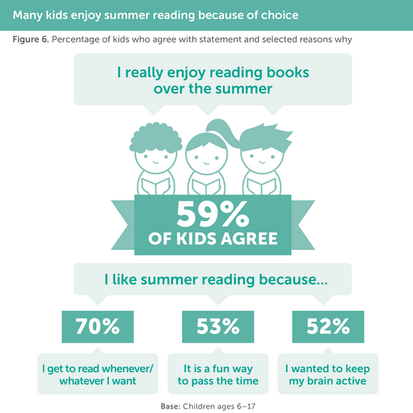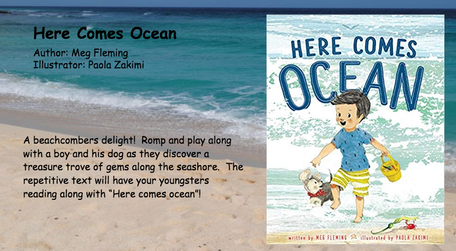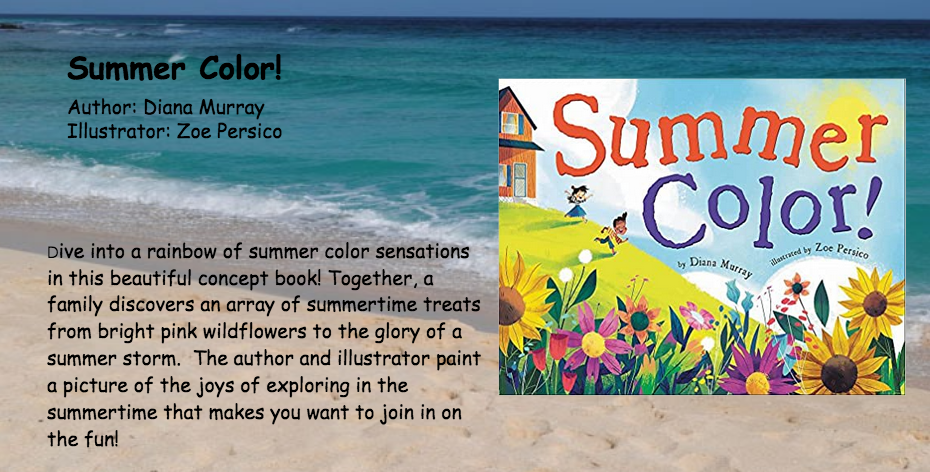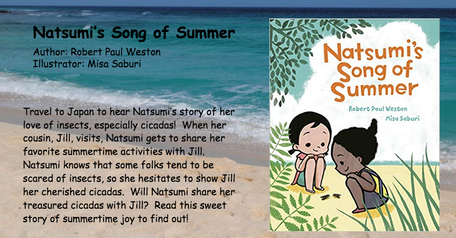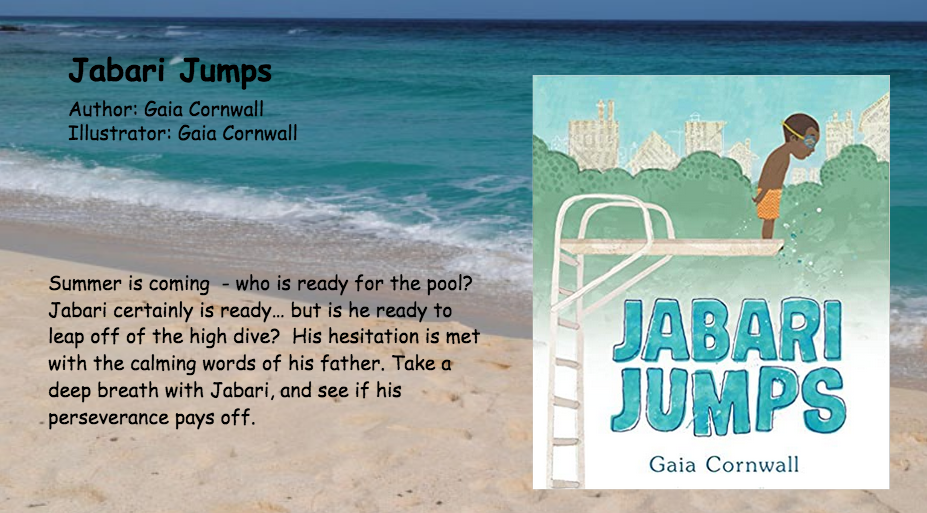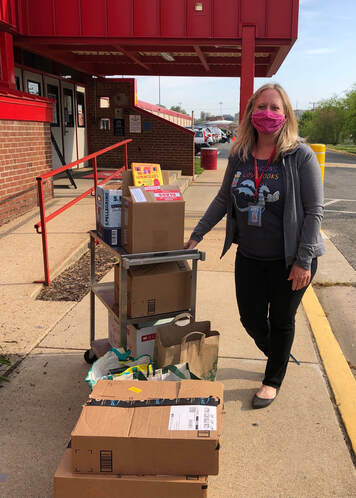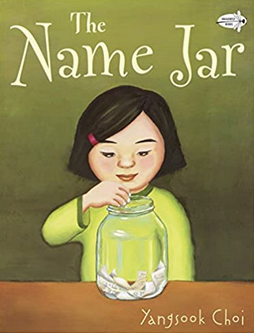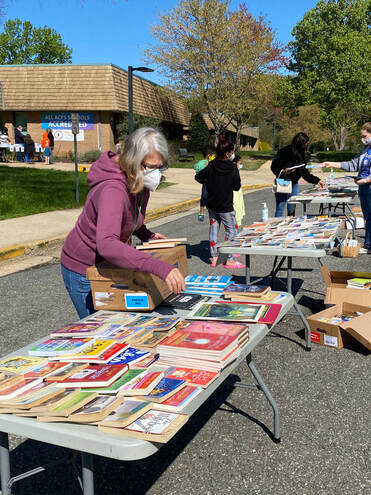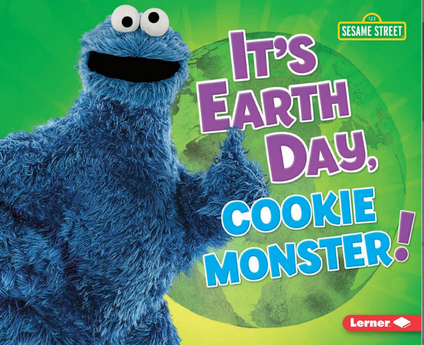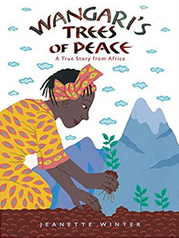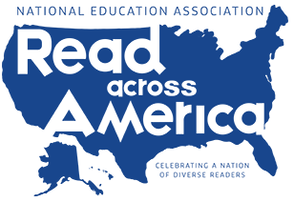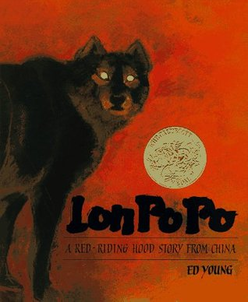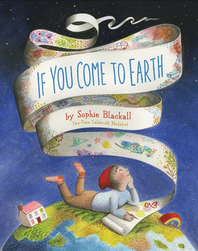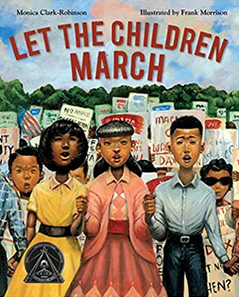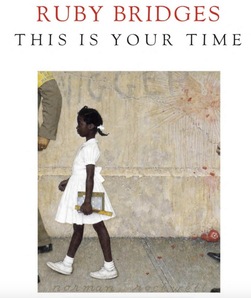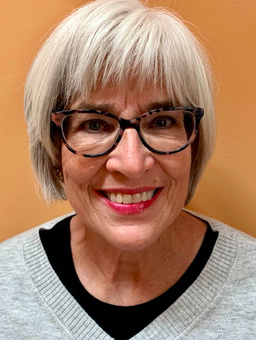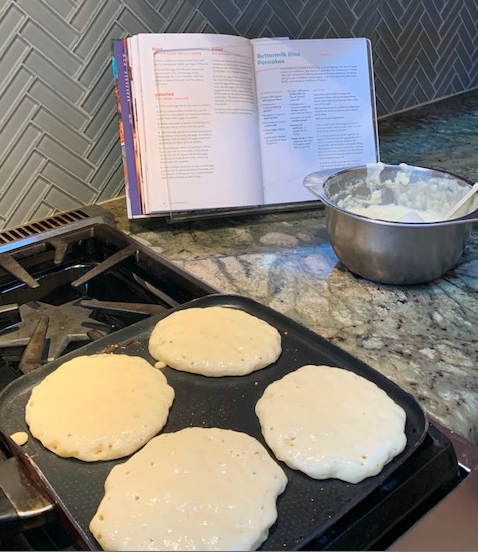BOOKS 'N BLOGS 'N ARTICLES OF NOTE
On this page, RIF of NOVA features articles and blogs about children's literacy, along with book reviews about Pre-K through Young Adult (YA) books -- discussed by members of our reading community. If you'd like to try your hand at writing a blog on a literacy or book-related theme or a book review about a new or favorite book, we'd be glad to consider it for publication here. Connect with us at our email: [email protected].
|
|
A Deep Dive into Books about Lebron James
by NOVA RIF Young Ambassador Camille Fallen
by NOVA RIF Young Ambassador Camille Fallen
|
LeBron James, the basketball icon who earlier this year became the player with the highest scoring record, is likely the world's most recognizable athlete. Over the course of his two-decade NBA career, a lot has been written and said about him. So, you may be surprised to learn how much you don't know about this once-in-a-generation talent.
|
Over the summer of 2023, I read three books about LeBron, which may lead you to think that I'm obsessed with him. I'm not. In fact, I'm not even a casual basketball fan! My LeBron deep-dive began because my mom couldn't stop talking about a book she had picked up at a local bookstore (she told she was intrigued by the cover which bore no title and had a black and white picture of LeBron). The book, titled simply LeBron, garnered my interest because of her recommendation. Then, in June, my mom took me with her to an event at Washington, D.C.'s Politics and Prose Bookstore, where I was able to meet the book's author, Jeff Benedict. |
LeBron takes the reader on a detailed, behind-the-scenes journey throughout the athlete's upbringing and career. Even those most familiar with LeBron's ESPN highlight reels will undoubtedly learn new information about his backstory. Benedict has scrupulously researched every aspect of LeBron's life, even conducting interviews with members of LeBron's close-knit circle. The book provides readers with a never-before-seen look into the man behind the legend -- the man who, due to tremendous hardships, is motivated by compassion, love, and generosity.
Although LeBron is a thick book (576 pages) with a target audience of primarily adults, I would recommend it as a read aloud for kids in upper elementary and middle school. Young readers can learn a lot from Benedict's strong vocabulary and diverse sentence structures.
Although LeBron is a thick book (576 pages) with a target audience of primarily adults, I would recommend it as a read aloud for kids in upper elementary and middle school. Young readers can learn a lot from Benedict's strong vocabulary and diverse sentence structures.
|
The second book I read, Who is LeBron James?, is by Crystal Hubbard and from the popular biography series Who Is...? It provided a brief overview of outstanding segments of LeBron's career and adequately captured some standout moments in his life.
Due to the length of the book (112 pages) and its audience, it mentions subjects without delving into them. For example, it discusses a pivotal moment in LeBron's life -- his mother's decision to allow him to live with childhood friend Frankie Walker, Jr. and his family -- in two pages compared to an entire chapter in Benedict's book. Interestingly, both Who is LeBron? and LeBron opened with a defining moment in LeBron's life, The Decision, an hour long televised interview with James in which the world waited to hear whether he would choose to continue to play with his hometown team, the Cleveland Cavaliers, or play for another NBA team in hopes of winning a NBA championship title. |
|
Unlike the previous two books, the final book I read, Epic Athletes: LeBron James, did not begin with the Decision. Instead, the story unfolded from LeBron's perspective a few years later during his improbable quest for a NBA title against the Golden State Warriors (this time -- spoiler alert -- wearing a Cleveland Cavaliers jersey). The book integrates details of LeBron's tough childhood with the intensity of the game to highlight the signficance of the moment.
Weaving stories together is what author Dan Wetzel does masterfully in this biography. He presents separate pieces of LeBron's life together and finds a way to make them relate to one another. His ability to highlight parallels in LeBron's life leaves the reader engaged and eager to learn more. I recommend this book particularly to elementary and middle school students, although people of all ages can learn something from Wetzel's writing style. If you're a diehard LeBron fan, reading all three books will surely satiate your thirst to learn all about the superstar athlete. But for those less enthusiastic, I recommend Epic Athletes for a quick, informative overview of LeBron's life and Benedict's LeBron if you wish to know the man behind the legend. |
As a later summer surprise, my family stopped in Akron, Ohio to visit House Three Thirty. This LeBron James Family Foundation initiative provides a center for hands-on job training for some of the most skilled yet underrepresented workers in the Akron community. It was beyond cool to see the place and to hold in my own hands an actual LeBron James shoe. I'm still not a basketball fan, but this was pretty neat!
*********************************************************************************************************************************************************************************************************
A Good Choice for Summer Reading!
Reviewed by NOVA RIF Young Ambassador McKenzie Watt
Reviewed by NOVA RIF Young Ambassador McKenzie Watt
Is reading an awesome Newbery Award winning book on your summer bucket list? If so, do I have a great one for you! The Last Cuentista by Donna Barba Hiuera is a dystopian novel that follows the life of a young girl named Petra Peña who, along with her family, is a passenger on a spaceship destined for a new planet billions of miles from earth.
|
How did she get on the spaceship and where is she heading, you might ask? There is an interesting answer to this question. A destructive comet is on a collision course with earth. Recognizing that the human race is at risk, a few hundred passengers are put on two spaceships to be taken off the planet to ensure the long-term survival of the human race on a new planet.
During the journey, all the passengers are put to sleep for hundreds of years. What is interesting about this is that when they wake up, they are told they will not have aged, and they will have full knowledge on how to support life on the new planet because memory cards will be implanted in their heads. However, there is a twist. Unknown to the passengers, all their memories of earth are wiped away, and they are only permitted to remember knowledge that the spaceship’s leaders think is suitable for life on the new planet. But, luckily for Petra, something goes wrong with her memory wipe, and she retains all her knowledge of earth. As the only remaining passenger whose memory of earth does not appear to have been erased, Petra faces many struggles. She uncovers that corrupt leaders are trying to create a utopian society where there are no differences among people. She also realizes that these leaders are exterminating anybody who threatens their plan, and this includes anybody who has memories of life on earth and what it was like. To survive, Petra must sabotage the destructive plans before its too late. |
She comes to the realization that to save her life and the life of her friends, she must escape the ship and seek out the colony of survivors from the other spaceship whom she hopes can help her foil the evil plans. Petra and her friends show bravery and courage by venturing out in unfamiliar territory and with limited supplies.
Does Petra succeed in finding the other colony? Does she expose the plan to create a utopian society with no differences? What fate awaits her once she finds the new colony? You’ll have to read the book to find out!
The fantasy genre is one of my favorite, and this book is a great example. The main character is around my age, and was very easy to relate to, even though colonizing a planet in outer space and overthrowing evil rulers isn’t necessarily something with which I have any experience! Time magazine certainly got it right by placing The Last Cuentista on its (2022) Best Books of the Year list! So, get your bucket list going and check this one out! -- McKenzie Watt
Notes: The Last Cuentista also won the American Library Association's 2022 Pura Belpré Award, along with the Newbery. It is geared for grades 5 and up. Please click the book cover for more information about this book.
McKenzie Watt is an 8th grader. She has been a NOVA RIF Young Ambassador since 2021. During that time, she has collected thousands of books for area children through her own organization, Kenzie’s Kids. This is her third book review for RIF of NOVA. Please scroll below to read her other submissions.
Does Petra succeed in finding the other colony? Does she expose the plan to create a utopian society with no differences? What fate awaits her once she finds the new colony? You’ll have to read the book to find out!
The fantasy genre is one of my favorite, and this book is a great example. The main character is around my age, and was very easy to relate to, even though colonizing a planet in outer space and overthrowing evil rulers isn’t necessarily something with which I have any experience! Time magazine certainly got it right by placing The Last Cuentista on its (2022) Best Books of the Year list! So, get your bucket list going and check this one out! -- McKenzie Watt
Notes: The Last Cuentista also won the American Library Association's 2022 Pura Belpré Award, along with the Newbery. It is geared for grades 5 and up. Please click the book cover for more information about this book.
McKenzie Watt is an 8th grader. She has been a NOVA RIF Young Ambassador since 2021. During that time, she has collected thousands of books for area children through her own organization, Kenzie’s Kids. This is her third book review for RIF of NOVA. Please scroll below to read her other submissions.
*********************************************************************************************************************************************************************************************************
A Look Back In Tribute: Children's Book Luminaries 2022
A brand new year -- 2023 -- gives a chance to reflect on the past year and to celebrate those who passed away during the year. Below, we celebrate the lives of several children's book authors and illustrators who have meant so much to children and families around the world. Each of the listed authors, illustrators, and author/illustrators is clickable by name to find more biographical information. The images are also clickable and lead to more detail about the book featured.
|
Ashley Bryan (1923-2022) died on February 4 at the age of 98. This award-winning children’s book author and illustrator, fine artist, and educator was widely known for his vibrant retellings of folktales and spirituals rooted in the Black oral tradition. He wrote or illustrated more than 70 children’s books over six decades. His book Beautiful Blackbird won the ALA Corretta Scott King Award for illustration in 2004.
|
Leonard Kessler (1920-2022) passed away on February 16 at the age of 101. Kessler created more than 200 books for young readers, that he wrote and illustrated himself or illustrated for other authors. He co-wrote more than 45 titles with his wife Ethel Gerson. Among Kessler’s best-known titles is his 1965 book Mr. Pine’s Purple House about a man who wanted his house to stand out from all the other white houses on his street.
|
Award-winning British author-illustrator Shirley Hughes (1927-2022) died on February 25 at the age of 94. Hughes is best known for her watercolor picture books that capture the everyday experiences of young children. In 1977, she published Dogger, one of her best-loved books, and the first to bring her a mass readership. Over her career, she wrote over 50 children’s books and illustrated some 200 more, with worldwide sales of more than 11 million.
|
Patricia MacLachlan (1938-2022) passed away on March 31 at the age of 84. This American children's writer was best known for her novel Sarah, Plain and Tall, a 1986 Newbery Medal winner, which has sold more than 7 million copies since it was published in 1985. MacLachlan wrote more than 60 children’s books during her career, including Snowflakes Fall (a tribute to the victims at Sandy Hook) and Skylark (a Sarah sequel).
|
British author and illustrator David John McKee (1935-2022) passed away on April 6 at the age of 87. He was best known for his stories about Elmer, a patchwork elephant who longs to fit in, first published in 1968. Over the years, McKee added dozens of Elmer books, which have been translated into more than 60 languages as well as lines of branded clothing and toys.
|
|
Jim Murphy (1947-2022) passed away on May 1 at the age of 74. Murphy wrote more than 35 nonfiction and fiction books for children, young adults, and general audiences, including more than 30 about American history. His Newbery Honor-winning narrative An American Plague, for example, describes the illness known as yellow fever, the toll it took on the nation's capital, and the eventual triumph over the disease.
|
Jeanne Steig (1930-2022) passed away on July 26 at the age of 92. This children’s author and multimedia visual artist was best known for her witty retellings of fairy tales and myths, most of them illustrated by her late husband, celebrated cartoonist and author William Steig. In Alpha Beta Chowder, the Steig's teamed up for an alphabet book picture book with such characters noisome Naomi (nervy as a newt), King Kang (the killer kangaroo who plays the kazoo), and a lovey-dovey lunatic from Lvov.
|
Raymond Briggs, (1934-2022) was a British author and illustrator. Best known for creating the immensely popular wordless picture book The Snowman, Briggs died August 9 at the age of 88. First published in 1978, The Snowman tells the story of a boy who makes a snowman that later comes to life in his dreams. The book sold more than 5.5 million copies worldwide. Other books by Briggs include Father Christmas, When the Wind Blows, and Fungus the Bogeyman.
|
Jill Pinkwater, (1941-2022) passed away October 4 at the age of 81. This author and illustrator was best known for the humorous line drawings she created for more than 50 chapter and picture books by her husband Daniel. Among their works are the Werewolf Club early chapter books following werewolves navigating elementary school; the Irving and Muktuk picture books starring two polar bears who scheme to obtain blueberry muffins; and two titles featuring Beautiful Yetta, a chicken who escapes the butcher shop for exploits in Brooklyn.
|
Author and illustrator Steve Jenkins (1952-2002) died on December 26 at the age of 69. His books, often written with his wife Robin Page, used detailed cut- and torn-paper collages to focus on the natural world and answered such questions as how many ways can you catch a fly?; why do turtles clean hippopotamuses?; and how do animals talk to each other? What Do You Do With a Tail Like This? won a Caldecott Honor Award in 2004. Over his career, Jenkins illustrated, wrote, and art-directed more than 50 books and illustrated some 40 more for other authors.
|
*********************************************************************************************************************************************************************************************************
A Thank You Blog from Vecinos Unidos
|
Vecinos Unidos (VU) is so grateful to be a part of a community that supports local organizations like ourselves.
In October 2022, with a donation from Reading is Fundamental (RIF) of Northern Virginia, we provided each of our children a gift of brand-new books, to help keep them motivated to read. Our children received two books each (their choice!) and took them home to keep. The children were ecstatic! We heard cries of “wow!” and watched one of our second-graders clean his hands before picking up his brand-new books. Earlier in the summer, RIF of NOVA also donated more than 200 books to our library. All the books were in wonderful condition -- new or lightly used -- and were carefully selected based on our children’s academic levels and interests. As a small non-profit, we were amazed by the generosity of RIF of NOVA as they stepped in immediately to help us. Keeping our children excited to read is easier when we can provide them with books they enjoy and want to share with family and friends. Seeing them discover the joy of reading helps them develop a love of learning and is fundamental to what we do at VU. |
About Vecinos Unidos:
"Vecinos Unidos makes a difference in the lives of students in grades 1-6 through homework assistance and summer enrichment programs—and has been doing so since 1997. We provide homework and academic assistance to youth who need assistance that they cannot find at home. These students come from homes where English is not spoken and economic and factors make it challenging for them to succeed academically." Vecinos Unidos is a registered 501(c)3 organization. |
*********************************************************************************************************************************************************************************************************
Replace the Summer Slide With a Summer Reading Adventure
|
By Erin Julius, FCPL Marketing & Communications Director
A Troubling Trend Have you heard of the summer slide? Don’t look for it on any playground. The “summer slide” refers to reduced test scores. Studies have shown that children score lower on standardized tests at the end of summer break than they did at the beginning, according to Brookings.com. Fairfax County Public Library (FCPL) partners with the Collaborative Summer Library Program (CSLP) to produce its summer reading program. Summertime loss of reading skills is cumulative. By the end of the sixth grade, children who experience the summer slide are two years behind their classmates, according to the Wisconsin Department of Public Instruction (WDPI). This slide harms children’s professional and personal futures. Good readers are better writers, make more money, and are even more likely vote in presidential elections and volunteer in their communities. Conversely, deficient readers are more likely to drop out of high school and be unemployed, according to the National Endowment for the Arts study “To Read or Not To Read: A Question of National Consequence. Libraries Tackle the Problem This problem is not new. Beginning in the 19th century, schools and public libraries started offering summer reading programs to combat the summer slide. But those early programs only existed in urban communities. Children in rural communities were too busy helping on family farms during the summer to enjoy free time for reading. Fortunately, most library systems in the U.S. now offer summer reading programs for children in all communities. Studies show that library and other community-based programs offer advantages over school-based or independent programs. Since they aren’t located in school buildings, children do not have to deal with negative perceptions associated with summer school, according to the WDPI analysis. Library programs often also are open to parent participation. Parental and caregiver involvement in reading is key to a child’s success. |
The Impact of Income Socioeconomic status (SES) is the most consistent factor identified in the relationship between summer vacation and the summer slide, with loss in reading skills increasing as income level decreases. Some studies even show, by some measures, that higher-income students actually gain reading skills over the summer. Research suggests that the summer slide creates a three-month gap in scores between middle- and low-income children, and, by the end of elementary school, lower-income children may be as much as three grades behind their higher-income peers, according to CSLP’s meta-analysis. But exceptions exist, and that’s where library summer reading programs can help. A 2012 study in the Journal of Education for Students Placed at Risk found that children of lower SES experienced gains just like their high-income peers if they had parents who read to them or took them to the library. Encouraging Kids’ Enjoyment FCPL’s Summer Reading Adventue (SRA) is designed to involve the whole family, and our staff wants to make it fun! “One of the things that makes me saddest during the summer is when families ask for textbooks,” said Sondra Eklund, the youth services manager at City of Fairfax Regional Library. “Yes, you want them to keep reading, but let it be without pressure,” Eklund said. “You can take them out of curriculum and show them the fun side of learning.” If children aren’t interested in reading on their own, caregivers can help by showing them the power of story, Eklund said. She suggests choosing a book to enjoy as a household and reading a chapter aloud each day. Listening to audiobooks in the car is another way to entice children into stories and motivate them to do their own reading, she said. To read the balance of the FCPL article, please click here. |
*********************************************************************************************************************************************************************************************************
I didn't realize that clean water was so scarce.
A Long Walk to Water -- Reviewed by NOVA RIF Young Ambassador McKenzie Watt
A Long Walk to Water, a New York Times bestseller by Linda Sue Park, is one of those stories that pulls at your heartstrings. It’s a blended historical fiction account of the true story of Salva Dut, an 11-year-old refugee from South Sudan who leads orphaned children to safety and eventually emigrates to the U.S.
Salva’s story is woven against a fictional story of another 11-year-old named Nya. Nya is a village girl who spends most of her days walking to and from a faraway pond to bring drinking water to her family because her village has no plumbing or running water. She pretty much has time to do nothing else but walk to and from this pond twice each day fetching water. She doesn’t go to school, and she doesn’t have time to play with friends. Although Salva, Nya, and I are of similar ages early in the story -- our life experiences are very different. I was engaged from the beginning to learn about the struggles they faced in their day-to-day lives.
Salva’s story is woven against a fictional story of another 11-year-old named Nya. Nya is a village girl who spends most of her days walking to and from a faraway pond to bring drinking water to her family because her village has no plumbing or running water. She pretty much has time to do nothing else but walk to and from this pond twice each day fetching water. She doesn’t go to school, and she doesn’t have time to play with friends. Although Salva, Nya, and I are of similar ages early in the story -- our life experiences are very different. I was engaged from the beginning to learn about the struggles they faced in their day-to-day lives.
|
As a young boy, Salva became separated from his family during the long-running (1983 to 2005) civil war in Sudan. He learns to survive on his own, and his journey to safety is very dangerous. But he is a strong and resilient person and eventually leads thousands of other ‘lost boys’ across Sudan to a refugee camp in Kenya, which ultimately saves their lives. Through hard work and dedication, he learns English while at the refugee camp and is selected to receive one of the few visas available to come to the United States. He had never seen snow before and arrived in the middle of a winter storm. As I read this part of the story, I could just imagine what it felt like for Salva watching snowflakes fall from the sky for the very first time! Salva’s American family was kind to him and helped him get on his feet in a new and unfamiliar country. He was very appreciative to have the opportunity to come to the United States but also remained committed to finding the family he lost during the war and to helping the children and families back in Sudan. Through hard work, perseverance, and determination, he founded a charity called Water for South Sudan. He was able to raise funds to establish water wells to bring fresh water to Sudan. This is an impressive accomplishment that has had a very important impact on Sudan. |
This is a feel-good story with a twist that comes together when Salva returns to Sudan to bring fresh water to isolated villages. Nya’s village is one of them, and the well Salva builds comes just in time. Nya's sister had become very sick, and it turns out the water that Nya was bringing back from her daily walks to the pond was contaminated.
I didn’t realize before reading this book that clean water was so scarce in other parts of the world and could be the difference between life and death. It also was eye opening to see that a young girl my age would be required to push so hard to provide for her family. It made me realize how fortunate I have been to be able to go to school each day to learn how to read and write and to be able to turn on the faucet to get clean water. If you want to spend an afternoon being inspired, pick up this book from your local library! -- McKenzie Watt Note: Linda Sue Park (2002 Newbery winner for A Single Shard) wrote a picture book companion to Salva's story about Nya and her daily challenges to find water for her family: Nya's Long Walk: A Step at a Time. To read more background on these inspirational books, please click here on an article from Rochester's Democrat & Chronicle newspaper. A video is also featured below. |
*********************************************************************************************************************************************************************************************************
In Tribute: Children's Book Luminaries 2021 by Dora Sue Black
For me, many of my memories are linked to books and the authors and illustrators who made the pages magical. It has been a year of memories as we have lost many wonderful authors and illustrators. As a children’s librarian, I find myself sharing stories about how and when I read many books. As I learned about the following authors and illustrators passing, I invite you to remember their books, their art, and the joy their books or illustrations brought to you or to your children.
Note: Dora Sue Black is a NOVA RIF board member and librarian at Dr. Charles R. Drew Elementary School in Arlington. All photos and book titles in her tribute are linked to biographies or further information about each author, illustrator, or book title. Please click to learn more about each artist and his or her legacy.
Note: Dora Sue Black is a NOVA RIF board member and librarian at Dr. Charles R. Drew Elementary School in Arlington. All photos and book titles in her tribute are linked to biographies or further information about each author, illustrator, or book title. Please click to learn more about each artist and his or her legacy.
|
Beverly Cleary (4/12/16-3/25/21) lived to be 104, passing away in March of 2021. She won dozens of awards for her books, including the 1984 John Newbery Medal for Dear Mr. Henshaw. In 2000, to honor her invaluable contributions to children's literature, Beverly Cleary was named a Living Legend by the Library of Congress. And in 2003, she was given the National Medal of Art from the National Endowment of the Arts.
Ms. Cleary is probably best known for the Ramona books or The Mouse and the Motorcycle. However, I remember Mitch and Amy and reading it over and over again when I was in the third grade. I found laughter and antics in all of her books. The children of today are finding Ms. Cleary again because her books are timeless and will live on for generations to come. |
Jerry Pinkney (12/22/39-10/20/21) brought the words of a book to life. This 2010 Caldecott winner for The Lion & The Mouse made the pictures jump off the page for readers of the books he illustrated. He also won five Coretta Scott King awards from the American Library Association over his career. With over 100 books credited to his portfolio, his memory will live on. One of his most famous illustrations may have been the 1977 cover of Mildred Taylor’s Roll of Thunder Hear Me Cry. One of my favorites will always be his Little Red Riding Hood book, with his new interpretation of this timeless fairy tale.
|
The most famous Eric Carle (6/25/29-5/23/21) book in my library is The Hungry Caterpillar. Each page allows children to experience different foods and counting. There are so many other favorites, too, such as Pancakes, Pancakes!, The Very Quiet Cricket, Friends, and The Grouchy Ladybug. The ultimate collage artist, his inviting colors and illustrations made people of all ages love his books. He will live on through his storytelling and illustrations.
|
Lois Ehlert (11/9/34-5/25/21) is a favorite of mine. Her colorful drawings and collages brought nature and rhyme to the books. I had the opportunity to meet her at a workshop many years ago. Her description of how she developed a book, made them come alive. She later brought to life Bill Martin’s book, Chicka, Chicka Boom Boom, which sold more than 12 million copies across various formats. These books still sing in the library. There will always be room for Ms. Ehlert's books ... Growing Vegetable Soup, Snowballs, Red Leaf, Yellow Leaf, Nuts to You!, and so many more.
|
Bernette Ford (6/30/50- 6/20/21) will be remembered as both an author and editor. As an author, she is celebrated for First Snow, Ballet Kitty, and Princess Puppy. One of my favorites is the book she co-wrote with Cheryl Willis, Bright Eyes and Brown Skin. Published in 1990, it was a groundbreaking book for its celebration of diversity and how children see themselves. As a publishing house editor, she will be remembered for advocating for all people to see themselves in books. She was one of the first African American executives in the publishing world.
|
Patricia Reilly Giff (4/26/35-6/22/21) wrote over 100 books for young readers. She became a full-time author after twenty years of teaching. Many may know her for the Kids of the Polk Street School series of 16 books about the adventures, misadventures, and high jinks of the children in Ms. Rooney's second grade class. She was also a two-time Newbery Honor Award recipient for Pictures of Hollis Woods and Lily’s Crossing, two more serious books about loneliness and belonging. She brought both fiction and historical fiction to life.
|
|
Norton Justor
(6/2/29-3/8/21) wrote The Phantom Tollbooth in 1961. Though the book is 60 years old, it lives on in new ways. In 2011, an annotated version was published; in 2012, there was a documentary film, and in 2017, a stage musical debuted in Washington DC. Children are finding this book again and loving it. |
Floyd Cooper
(1/8/56-7/15/21) was a gifted illustrator who won Coretta Scott King Awards, ALA Awards, and more. Unspeakable: The Tulsa Race Massacre was published in February 2021, not long before Cooper's death. His illustrations bring an addition to the story. Juneteenth for Mazie is one of my favorites, as is Ruth and the Green Book. The books he illustrated share many African American history stories that are rarely heard. |
Gary Paulson
(5/17/39-10/13/21) wrote over 200 books for children and adults in his lifetime. He is best known for his novels and nonfiction for young people about self-reliance and the transformative power of the wilderness. Three of his books earned Newbery Honor awards: Dogsong, Hatchet, and The Winter Room. Paulson's final novel, Northwind, will be published in January 2022. |
April Pulley Sayre (4/11/66-11/6/21) wrote more than 80 books for young readers, often written in rhyme, clever wordplay, and centered on nature and science. I love Go Go Grapes and Turtle Turtle Watch Out. These delightful books will continue to foster children’s love of the outdoors and creatures. Sayre’s ten photo-illustrated books include the classic Rah, Rah, Radishes, A Vegetable Chant and Raindrops Roll. Happy Sloth Day!, a collaboration with her husband, will be published in March 2022.
|
*********************************************************************************************************************************************************************************************************
After reading the first few pages, I was hooked!
Charlie Hernández & The League of Shadows -- Reviewed by NOVA RIF Young Ambassador McKenzie Watt
|
If I had to describe this book in one word it would be -- roller coaster (okay, that’s two words, but you get the point). This book has so many twists and turns! I found this book when I was looking in the fantasy section of my school’s library. Fantasy is one of my favorite genres and, as I was walking down the aisle, the spine and cover of the book caught my attention. After reading the first few pages, I was hooked!
The main character is Hispanic, and the book is based on Spanish folklore which I found interesting to learn more about because I wasn’t very familiar with this topic before reading the book. The main character, Charlie, loves mythology. His whole life, his grandmother told him amazing stories about monsters who haunt and terrorize people across the world. He could listen to his grandmother’s stories forever and never get bored! But now, the stories don’t seem like make believe. Somehow, the stories from his childhood are becoming real -- and Charlie has become the main character. How is this possible? It turns out, these creatures have always existed in the shadows where nobody could see. Charlie’s body begins to mutate, and he’s not quite sure how to stop it or what to do. So instead, he tries to hide it. But it is kind of difficult to hide horns and feathers. Charlie enlists the help of his friend, Violet, to try to figure out why this is happening to him and what he should do. Charlie and Violet find the answers they are looking for when exploring a local cemetery. It turns out these mutations are occurring because he is turning into the hero of his grandmother’s stories. No sooner have they solved one mystery than another begins. Charlie realizes that somebody -- or something — is after him, and they want to kill him for trying to stop their evil plans for world domination. Charlie is hunted by monsters and during a chase, he runs right into the League of Shadows. Even though their name sounds evil, these are the good guys. They help Charlie by telling him information that will help him defeat the creatures who are after him. But, despite their help, Charlie is double crossed by somebody he trusted. Now, Violet’s life is in danger, and Charlie is the only person who can save her. Charlie is able to outsmart his nemesis by tricking her into a challenge and pushing her to her limits. In the end, Charlie saves Violet and destroys the plans of the evil monsters. The book uses a lot of Spanish phrases and names, which I found interesting because I have taken Spanish in school. It makes me excited to learn even more about the language and culture. Overall, I couldn’t put this book down -- and if you like action and adventure, I highly recommend reading this book. I can’t wait to read the sequel! |
What other reviewers are saying:
"Filled with action with fast-paced chapters, Calejo's novel is sure to draw in readers and introduce them to the magic, beauty, and history of Hispanic myths and legends (many of which are elaborated on further in a glossary for those unfamiliar with the stories). This is a perfect pick for kids who love Rick Riordan's many series, particularly for those eager for mythologies beyond Greek and Roman stories."
– Booklist (Starred Review) "He's not the "chosen one"—but the bad guys think he is. Mexican-born, American-raised Charlie Hernández just grew horns. And feathers. It's inconvenient. All of a sudden, all the Hispanic (both Latin American and Iberian) myths he learned from his abuela leave the world of legend and reveal themselves in Miami—and everyone, good and bad, seems to be after Charlie. A winner for all kids, but it will be especially beloved by Latinx and Hispanic families who may recognize some of the characters." – Kirkus, (Starred Review) "The story is fast paced and jam-packed with many encounters with mythological creatures loosely based on folklore from around the Spanish-speaking world. The glossary at the end is helpful with a description and country of origin for each mythological being. VERDICT A great start to a new series that will be devoured by fantasy fans who enjoy action with ample doses of mythological inspirations." – School Library Journal, January 2019 About the book's author Ryan Calejo:
Ryan Calejo was born and raised in south Florida, where he graduated from the University of Miami with a BA. He teaches swimming to elementary school students, chess to middle school students, and writing to high school students. Having been born into a family of immigrants and growing up in the so-called “Capital of Latin America,” Ryan knows the importance of diversity in our communities and is passionate about writing books that children of all ethnicities can relate to.
About the book reviewer McKenzie Watt:
|
*********************************************************************************************************************************************************************************************************
Graphic Novels -- Are They Really Reading? The Answer: A Resounding YES!
|
The Research Behind Graphic Novels and Young Learners
by Leslie Morrison, CTD Summer Leapfrog Coordinator Graphic novels have become a popular format in classrooms, partly due to their appeal to reluctant readers. More recently, a growing body of research, focused on how the brain processes the combination of images and text, indicates that graphic novels are also excellent resources for advanced learners. When students read visual narratives, the activity in the brain is similar to how readers comprehend text-based sentences. However, when students learn to read graphic novels with an analytical eye, depth and complexity are added to the reading process. With graphic novels, students use text and images to make inferences and synthesize information, both of which are abstract and challenging skills for readers. Images, just like text, can be interpreted in many different ways, and can bring nuances to the meaning of the story. In this form of literature, the images and the text are of equal importance—the text would not fully make sense without the images, and the reverse is true as well. Graphic novels can also challenge students to think deeply about the elements of storytelling. In a traditional text, students uncover meaning embedded in sentences and paragraphs. In graphic texts, students must analyze the images, looking for signs of character development, for example, or clues that help build plot. All of this experience developing textual and visual reading skills contribute to students’ understanding of their world — the ways the text and images all around them communicate — and in turn help them in crafting their own stories. Credit: Northwestern University School of Education and Social Policy 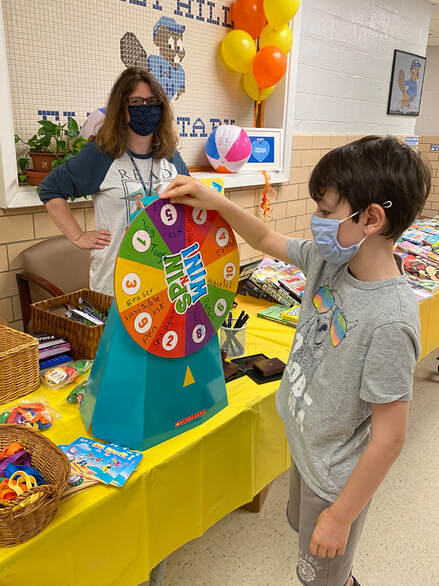 Woodley Hills ES librarian Jill Connors and her son (pictured at a NOVA RIF book distribution) offered up a great graphic novel list Woodley Hills ES librarian Jill Connors and her son (pictured at a NOVA RIF book distribution) offered up a great graphic novel list
Many may be familiar with the popular Dav Pilkey Dog Man series of graphic novels. But other ideas abound! Jill Connors, Woodley Hills Elementary School librarian and NOVA RIF liaison notes, "Students LOVE them, and their benefits are countless. My son is a rising sixth grader at Woodley Hills, and we love to read graphic novels together. Here are a few that we recommend." When Stars are Scattered by Victoria Jamieson and Omar Mohamed -- A beautifully written and illustrated true story of a young man and his brother living in a refugee camp in Kenya. This middle grade novel was a National Book Award Finalist. Beetle & The Hollowbones by Aliza Layne -- Enter the world of ‘Allows', where there are magical sorceresses, spirits, shopping malls, best friends, danger, suspense, and of course love. This graphic novel has it all! The Cardboard Kingdom by Chad Sell -- A group of neighborhood children transform their neighborhood with cardboard boxes using their imaginations to make summer vacation a blast! |
New Kid by Jerry Craft -- Follow Jordan’s first year of middle school at a fancy private school where there is little diversity and lots of racial microaggressions. Jordan struggles to fit in but eventually finds his place with the help of some new friends. We loved this book so much and can’t wait to read the sequel -- Class Act. Note: New Kid won the Newbery Medal, the Coretta Scott King Author Award, and the Kirkus Prize for Young Readers' Literature.
Twins by Varian Johnson and Shannon Wright -- Twins Maureen and Francine are starting middle school and growing apart. This isn’t easy for two sisters who have always been best friends. Will middle school change their relationship permanently? Amulet by Kazu Kibuishi -- This series has been around for a long time but is still a favorite by almost everyone who picks it up. Kibuishi creates a fantastical world with demons, mechanical rabbits, a talking fox, a giant robot, and children trying to navigate the dangers throughout the eight-book series. Crossover by Kwame Alexander -- Get to know twins Josh and Jordan Bell and their parents in this graphic novel adaptation to the original novel in verse. Growing up isn’t always easy when these twins start to grow apart. Enter their world of basketball, girls, and brotherhood. You won’t regret it! Red Panda and Moon Bear by Jarod Rosello -- Follow the adventure of Latinx siblings Red Panda and Moon Bear as they protect their working-class community from supervillains and aliens. Such a fun fantasy adventure novel! For more graphic novel ideas, check out our new Graphic Novel Resource list. It features many links to graphic novels for ages toddler to teen+, including a list from the New York Times; another from Childhood 101; and a third from Scholastic. And meet NOVA RIF liaison Jill Connors in a short bio on our How We Help page here. |
*********************************************************************************************************************************************************************************************************
Summertime...and the Reading is Easy!!!
|
Get Serious About Summer Reading
The National Education Association has prepared an amazing toolkit of ideas to promote reading over the summer in an article called: Get Serious About Summer Reading. A few reading tips are listed below, but check out the full article for more activities and resources to get kids started with summer reading! NEA Reading Tips
|
The Power of Choice Drives Kids' Enjoyment of Summer Reading*
by Deimosa Webber-Bey, Scholastic Senior Librarian & Manager, Library Services Counter to conventional thought, the view that summer reading is a chore is not shared by a majority of kids today. More than half (59%) of all kids ages 6–17 say “I really enjoy reading books over the summer.” Perhaps unsurprisingly, given other patterns observed throughout the findings of the Kids & Family Reading Report, younger children and frequent readers are more likely than teens and infrequent readers to enjoy reading books over the summer. Additionally, kids whose parents are aware of the summer slide also feel more positively about summer reading. When given the opportunity, kids believe participating in a summer reading program prompts them to read more. Twenty-two percent of kids told us that they participated in a summer reading program or contest and 65% said their participation resulted in reading more than they otherwise would have. Yet this opportunity was not afforded to all children: half said they didn’t know of any summer reading program in which they could have participated. Regardless of access to summer reading programs, frequency of reading books for fun, or whether a child is entering their early elementary years or is a rising senior in high school, the top reasons kids enjoy summer reading remain the same: it’s about the power to choose their books and read whatever and whenever they want (70%), to have an enjoyable way to pass the time (53%), and, in a nod to the saviiness of kids, they want to keep their brains active (52%), and they know reading books can deliver on this. *See the full Scholastic article here: https://www.scholastic.com/readingreport/summer.html.
|
*********************************************************************************************************************************************************************************************************
Chill Out with a Good Summer Book! -- by Marci Hoyt
Hutchison Elementary School librarian and RIF of NOVA liaison Marci Hoyt hopes all RIF of NOVA readers will read, read, read during the summer months! To get everyone started, she prepared some slides with these great book ideas!
*********************************************************************************************************************************************************************************************************
Children's Book Ideas for May -- Asian American and Pacific Islander Month
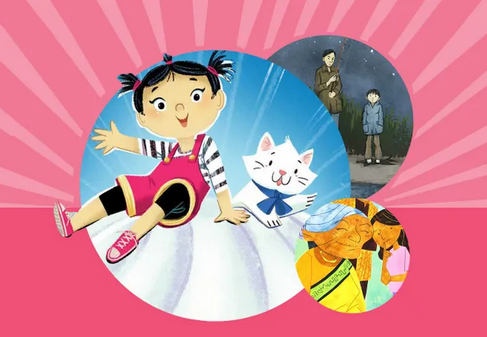
16 Exciting Books for Kids Featuring Asian and Pacific Islander Characters That They Won’t be Able to Put Down
by Latifah Miles, former parenting editor Bestproducts.com If you take a look at your kid's bookshelf right now, you might be surprised at the lack of diversity amongst the titles. Whether their shelves are full of car books or titles that feature characters that only fit a certain mold, there's plenty of room for books that introduce them to other types of characters and cultures. With vast ethnicities that cover large swaths of the world, storytime is a great way to introduce your child to all of the amazing cultures that make up Asian American and Pacific Islander populations. The books in this list are wonderful, uplifting titles that will educate, entertain, and delight your little ones. From picture books for you to read during your bedtime routine to chapter books for your older kids to explore on their own, these are our favorite books featuring Asian American and Pacific Islander characters that you should add to your kid's library. Click here to find this list. Other great lists feature more books to celebrate Asian American and Pacific Islander Month. One comes from School Library Journal. Find that list of 20 books here. ALSC featured a blog on the topic with more great book recommendations. Find that at this link. Reading Rockets, always a good source of book ideas, has a great list, too. Click here! On this list from Penguin Classroom, find 90 books to celebrate Asian and Asian-American voices. Each featured book is clickable, allowing you to learn more about each one! Last, but certainly not least, check out this list from A Pragmatic Mom with many more great ideas for AAPI. |
Cora Kelly ES librarian and NOVA RIF liaison Cathy Guthrie offered a list of her favorite books for the month: A Different Pond written by Bao Phi and illustrated by Thi Bui Drawn Together by Minh Le and illustrated by Dan Santat Danbi Leads the School Parade by Anna Kim The Name Jar by Yangsook Choi I used The Name Jar in September this year when we talked about our names and where they came from and what their meaning is. I love this story. :) Front Desk by Kelly Yang This is a chapter book for upper elementary. I loved it. I read it with fifth graders for a book club this year. |
|
Leslie Broughton, James K. Polk librarian and NOVA RIF liaison offered her ideas for Asian American and Pacific Islander Month, too! Here they are.
Picture Books Round is a Mooncake - Roseanne Thong Grandfather's Journey - Allen Say Uncle Peter's Amazing Chinese Wedding - Lenore Look The Name Jar - Yangsook Choi Red Lollipop - Rukhsana Khan Eyes That Kiss in the Corner - Joanna Ho Lift - Minh Le Bilal Cooks Daal - Aisha Saeed Lon Po Po - Ed Young Big Mooncake for Little Star - Grace Lin Chapter Books Dumpling Days; Year of the Dog - Grace Lin Thing About Luck - Cynthia Kadohata Listen Slowly - Thanhha Lai Amina's Voice - Hena Khan |
*********************************************************************************************************************************************************************************************************
Celebrate Earth Day with these wonderful books! -- by Janice Perreault
"Earth Day is a time for thinking about ways we can be better stewards of the Earth: conserve resources, recycle, and plant trees and gardens," notes Janice Perreault, RIF of NOVA liaison and librarian at Bailey's (lower) School for the Arts and Sciences in Fairfax County. She shared some of her great Earth Day suggestions based on what the children at Bailey's love to read.
For younger children choose It’s Earth Day, Cookie Monster! by Mary Lindeen. Cookie Monster learns about caring for the Earth and about the history of Earth Day. The always popular author and primary color illustrator Todd Parr wrote The Earth Book. His message is about the simple things children can do to help our planet. Trees Make Perfect Pets by Paul Czajak is a new picture book about a girl who wants a pet tree. They are inseparable until the day she has to plant the tree.
Have a chapter book reader at home? How about Judy Moody Saves the World by Megan McDonald? Judy and her class take on an environment-saving project. Or maybe Annie Glover is Not a Tree Lover by Darleen Beard, which tells the story of a fourth grader’s campaign to save her town's ancient elm tree from development.
The picture book biography Wangari’s Trees of Peace: A True Story from Africa by Jeanette Winter tells the story of environmentalist and Noble Peace Prize winner Wangari Maathai. Learn about her effort to encourage women to help her plant trees to re-green our world. And what child doesn’t love Fly Guy by Tedd Arnold? Check out his nonfiction book Fly Guy Presents: Garbage and Recycling. If you like to do crafts at home with your children, Earth-friendly Crafts by Veronica Thompson might be a good pick.
For younger children choose It’s Earth Day, Cookie Monster! by Mary Lindeen. Cookie Monster learns about caring for the Earth and about the history of Earth Day. The always popular author and primary color illustrator Todd Parr wrote The Earth Book. His message is about the simple things children can do to help our planet. Trees Make Perfect Pets by Paul Czajak is a new picture book about a girl who wants a pet tree. They are inseparable until the day she has to plant the tree.
Have a chapter book reader at home? How about Judy Moody Saves the World by Megan McDonald? Judy and her class take on an environment-saving project. Or maybe Annie Glover is Not a Tree Lover by Darleen Beard, which tells the story of a fourth grader’s campaign to save her town's ancient elm tree from development.
The picture book biography Wangari’s Trees of Peace: A True Story from Africa by Jeanette Winter tells the story of environmentalist and Noble Peace Prize winner Wangari Maathai. Learn about her effort to encourage women to help her plant trees to re-green our world. And what child doesn’t love Fly Guy by Tedd Arnold? Check out his nonfiction book Fly Guy Presents: Garbage and Recycling. If you like to do crafts at home with your children, Earth-friendly Crafts by Veronica Thompson might be a good pick.
*********************************************************************************************************************************************************************************************************
Read Across America 2021 -- Book Ideas from Dora Sue Black & Jackie Pippins
|
Every March, children and schools across the country celebrate Read Across America Day and National Reading Month. At Arlington's Dr. Charles R. Drew Elementary, school librarian Dora Sue Black is highlighting Caldecott Winners over the years. As she notes:
The books are honored for their extraordinary art. I always stress to the students that the illustrations extend the story through the eyes of the illustrators. Here are a couple of Caldecott winners from years back that the students always ask to be reread. Lon Po Po, written and illustrated by Ed Young, is a version of Little Red Riding Hood and won in 1990. The story engages the children and causes elation when they make the connection with the |
traditional Little Red. The story has three children instead of just one. The children love the trickery that is used to get rid of the wolf and his ill intentions. Young’s art takes the children from their own classrooms into a beautiful Asian countryside.
Another fun book is The Three Pigs by David Wiesner, which won the Caldecott medal in 2002. The author starts with the traditional story; however, the pigs are blown out of the pages to visit other nursery rhymes and fairy tales. A forever favorite is the The Snowy Day by Ezra Jack Keats (Caldecott 1963). Peter loves to play in the snow. As March is a transitional month, we may have snow and remember making snowballs, snow angels, and marching around in the crunchy snow. Older students will like the poetry of Kwame Alexander in The Undefeated, illustrated by Kadir Nelson (Caldecott 2020). This wonderful book shares Black history through its illustrations and mighty words. Some of the stories are wordless and lead us to encourage the children to |
make up their own dialogue, such as in the books Wolf in the Snow by MatthewCordell (Caldecott 2018) and Flotsom by David Wiesner (Caldecott 2006). From the winter snow to the ocean's depths, it allows the children to share their creativity and imagination.
Books like these open the world up to children through their illustrations, writing, history, and imagination. Share a wonderful book and Read Across America! -- Dora Sue Black, NOVA RIF board; Librarian, Dr. Charles R. Drew Elementary School |
|
The top recommendation for Read Across America Day from Jackie Pippins is If You Come to Earth by Sophie Blackall. Jackie notes the book has an inclusive message, delightful pictures, and is perfect for kids returning to school.
|
If you come to Earth, there are a few things you need to know. . .
We live in all kinds of places. In all kinds of homes. In all kinds of families. Each of us is different. But all of us are amazing. And, together, we share one beautiful planet. |
A New York Times Best Children's Book of 2020, the book is described as "a call for us to take care of both Earth and each other."
Jackie's other recommendations include Carmela Full of Wishes by Matt de la Pena, Magnificent Homespun Brown by Samara Cole Doyon, Outside In by Deborah Underwood, and Fight of the Century; Alice Paul Battles Woodrow Wilson For the Vote by Barb Rosenstock. "I thought the last one would also be good for Women's History Month." -- Jackie Pippins, NOVA RIF liaison; School Library Media Specialist, Barcroft Elementary School |
*********************************************************************************************************************************************************************************************************
|
Representation Matters
By Carylee Carrington Through 2020, the hashtag "#representationmatters" has been widely used to discuss the lack of representation of the African-American culture in society. Specifically, it has been a mentorship program aimed at connecting people who self-identify as Black, Indigenous, and people of color (BIPOC) who are interested in publishing and literature, with publishing professionals who can help their mentees learn about, getting into the industry. This has given rise to many industries wanting to showcase more children's literature that would fit this mission. Though some still may ask, why does representation matter in children's literature? Children's literature is the bedrock of learning and understanding. Those books influence our growth and our thinking. No, this is not just about having black kids read books with black characters. Giving all children the ability to see other children or people, other than themselves, depicted in books, allows them to see far beyond the face or culture that is often always around them and broadens their view of the world. Most people will remember the first book they read as a child. The first book that we read cover to cover by ourselves. For most children that is such an achievement. For me that book was “Fun With Dick and Jane.” And I remember several books I read throughout my childhood, “Frog and Toad Are Friends” and “Three Little Kitten’s Who Lost Their Mittens”. Of all books I remember as a child, none of them had covers with characters that looked like me. In fact, being a person of color, the first book that I remember reading that had characters that represented me was, “Roll of Thunder, Hear My Cry.” I was in the 6th grade. It would take 11 years, before I was introduced to a book that had characters who looked like me. Unfortunately, for many children who are not of Caucasian descent, this has been the norm. In recent years, we have seen an increase the publication of diverse books. Although, as we have been living in the 21st century for some time now, I would have hoped that we would have been further along in promoting diversity. Fairytales, Disney movies, most of characters introduced to children have been either animal or Caucasian. In 2019, the Cooperative Children’s Book Center (CCBC) released its survey results on diversity in children’s and YA literature. The report, |
which breaks down the number of children’s and YA books by and about BIPOC from the previous year. In 2020, for the first time, they also counted books by and about Pacific Islanders. In years past, these were counted with the Asian/Asian American count, but this was not an accurate label.
Studies have shown that children gain a sense of pride and confidence when reading a book with characters that mirror some aspects of themselves. This helps to impact their sense of self-worth, outlook on the world, and growth as the next generation who will be our future leaders. “Representation Matters” should not be whittled down to merely a hashtag or a Black History Month message, but as a true movement of diversity, that will continue to impact change for generations to come. Carylee Carrington is a RIF of NOVA board member. Read about her books for children on our New Books...with a NOVA Connection page. |
*********************************************************************************************************************************************************************************************************
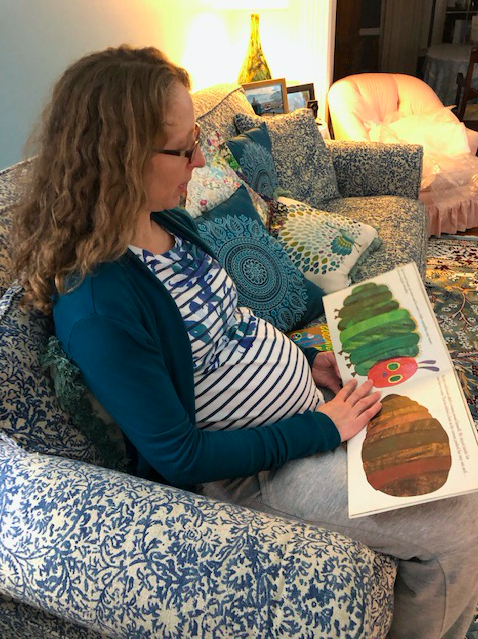 NOVA RIF board member Maureen McLaughlin before the birth of her new baby Izzy
NOVA RIF board member Maureen McLaughlin before the birth of her new baby Izzy
The Benefits of Reading to Your Baby in the Womb
By Megan McCoy Dellecese
October 29, 2020
You may think the only benefits of reading to your unborn baby are the relaxation and bonding you feel. But science shows that reading to baby in the womb helps develop early language learning. In small children, reading is proven to help with language development and increased word recognition. Reading can also create a positive bond between parent and child. It can provide a great wind-down before bedtime and spark an early interest in learning. Maybe talking, singing, or playing music to a baby while in the womb comes naturally to many expecting couples. There’s much to be said for reading to a child in utero. There are numerous advantages—both for baby and the parents. We can be very focused on the preparation for the coming of new life and the general health needs of the mother and baby. However, early attention through reading to your unborn baby builds a wonderful foundation to solid future relationships. Reading to your unborn baby also helps you slow down, relax, and experience the fun moments of early parenting. You’ll enjoy the sweetness and simple lessons (which can be great at grounding adults in times of stress) of a good picture book.
Will reading to your baby in the womb make her smarter?
Legend has it that cellist Pablo Casals started to sight-read a piece of music and soon realized he knew what was coming next, without reading it. He later learned that his cellist mother had rehearsed the piece daily in the later stages of her pregnancy. Talking, reading, and playing a variety of music can help stimulate baby’s senses and improve her brain development, according to Dr. Michael Roizen. “Exposure to different sounds and scenes is essentially what helps establish connections from one set of neurons—the nerve cells of the brain—to another. This is how we all learn.”
Parent-Baby Bonding and Lower Maternal Stress
Many studies show that reading (particularly from the mother’s relaxing voice) causes a baby’s fetal heart rate to lower. Also, the bond that is experienced between parent and child later on can start to occur while Mama or Papa read to the baby prenatally. It’s also a great way to kickstart secure attachment in infants. Participation in reading is also a great way for other family members to connect with the baby. An older child can read or talk about her favorite parts of the story. And the new baby can start to learn his sibling’s voice. A study at the University of Oregon found when pregnant mothers were given a recording that included a made-up word to play near the end of pregnancy, the babies were able to recognize the word and its variations after they were born (source). They could discern this by neural signals emitted by the babies that showed they recognized the pitch and vowel changes in the fake word. The babies who heard the recording most frequently displayed the strongest response, suggesting that infant language learning begins in utero.
When should you start reading to your baby in the womb?
At about six months along, a baby is already quite familiar with the sounds of the womb, from the mother’s heartbeat to digestive sounds. From outside the womb, sounds are extremely clear, although about 10 decibels lower. From Week 25 forward, a baby’s primary connection and information to the outside world comes in the form of sound. By this point, the soothing, rhythmic sounds of a simple story should be quite audible, although the tones and cadences of the voice are more important than enunciation of the actual words.
Books to read to your baby in the womb
You can use any of the books that are piling up in gift baskets for baby to enjoy when he arrives. Particularly, books with a clear rhythm and perhaps rhyme patterns provide a soothing, almost melodic listening experience. Anything from Dr. Seuss and Eric Carle to Goodnight Moon and Guess How Much I Love You work well for this. Predictable books like Brown Bear, Brown Bear, What Do You See? or Chicka Chicka Boom Boom (both by Bill Martin, Jr.) are also perfect for prenatal reading, as well as classic repetitive nursery rhymes and fairy tales. But, don’t feel that you need to stick to the classics when choosing books to read to your baby in the womb. This is your chance to experiment with newer characters and authors. Especially if you haven’t read a picture book since your own childhood. There are fabulous modern stories that are equally enjoyable to parents as they are babies. Some newer favorites include Mo Willems (while his characters, “Pigeon” and “Elephant and Piggie,” are particularly popular, try some of his others for a hilarious surprise), the Llama Llama series by Anna Dewdney, and any irreverent book by Jon Klassen.
Whatever text you choose to read to your unborn baby—funny or classically heartwarming—it’s the process of prenatal reading that matters. The experience of reading will surely benefit your little one. Even if just through the time spent together and the soothing rhythm of familiar voices. It also provides some intentional calm time and peace for the parents and siblings. And you’ll be sure to set a book-loving precedent that will last into your baby’s life.
Connect with School Librarian Megan McCoy Dellecese on her site, Meg Acts Out
Article Courtesy: Green Child Magazine
*********************************************************************************************************************************************************************************************************
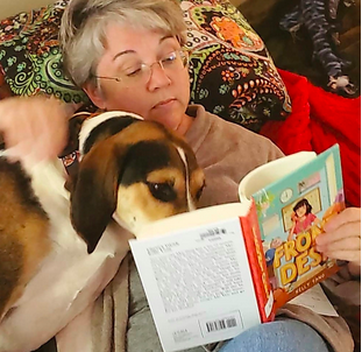 Dora Sue Black enjoys a reading moment with a favorite friend!
Dora Sue Black enjoys a reading moment with a favorite friend!
Celebrating Children with Literature – Ideas from School Librarian Dora Sue Black
My students at Dr. Charles R. Drew Elementary School in Arlington reflect the world. The good news is that the school library can reflect the world, too, with so many wonderful stories whose characters and topics share many different cultures and history. The American Library Association held its 'Midwinter Conference Virtual Event' in January. Over the course of several days, we heard from many different authors and poets whose works celebrate many different cultures, ages, and history that I am now purchasing for my library. I am also sharing the Virginia Reader’s Choice books for 2020-2021 to my students.
Below are three of the many wonderful books that my students have loved and ones that I would recommend, particularly as we celebrate Black History Month and multiculturalism. We are lucky enough to have diverse schools where we teach the students to respect one another. Note: Dora Sue Black is a member of the NOVA RIF board.
My students at Dr. Charles R. Drew Elementary School in Arlington reflect the world. The good news is that the school library can reflect the world, too, with so many wonderful stories whose characters and topics share many different cultures and history. The American Library Association held its 'Midwinter Conference Virtual Event' in January. Over the course of several days, we heard from many different authors and poets whose works celebrate many different cultures, ages, and history that I am now purchasing for my library. I am also sharing the Virginia Reader’s Choice books for 2020-2021 to my students.
Below are three of the many wonderful books that my students have loved and ones that I would recommend, particularly as we celebrate Black History Month and multiculturalism. We are lucky enough to have diverse schools where we teach the students to respect one another. Note: Dora Sue Black is a member of the NOVA RIF board.
|
We Are Water Protectors by Carole Lindstrom and illustrated by Michaela Goade is the 2021 Caldecott Medal winner. This beautifully illustrated book, by an author and illustrator who are both of Native American heritage, is about taking care of our planet’s water and resources. The pictures add to the text and allow us, in a very lyrical way, to learn about Native American heritage and respect for the land. It is an absolute gem.
In this time when we should be celebrating all cultures, this book allows us to learn about and to appreciate indigenous cultures and history. In a non-didactic way, it is also a wonderful discussion starter about how to care for the Earth and how we need to pay attention to how we treat our planet. |
Let the Children March by Monica Clark-Robinson and illustrated by Frank Morrison was a 2019 Coretta Scott King Illustration Honor Book. This picture book recounts the 1963 Children’s March in Birmingham, Alabama when more than a thousand African American children volunteered to march for their civil rights after hearing Dr. Martin Luther King, Jr. speak.
This book allows children to learn about a real moment in history and start a conversation on how they can continue to make an impact on our need for equality for all. The beautiful illustrations make the book accessible for all ages. In my opinion, it is an important history lesson that does not shy away from sharing the disturbing behavior. |
Ruby Bridges spoke at the ALA conference, and I was lucky enough to hear her. She recounted her memories of entering the all-white Louisiana public elementary school in 1960 at the age of six, escorted by federal marshals, in the midst of chaos, hatred, and segregation.
Ms. Bridges has authored a new book, This Is Your Time. From her presentation, it sounds amazing! While I am waiting for it to be delivered, I am sharing her earlier book, Ruby Bridges Goes To School, My True Story, to my students. They love to hear stories from prime resources and love the real photographs. This is a wonderful story -- with engaging pictures and an important message -- for kindergarten through first grade. (Note: In a Today Show interview, Ms. Bridges discussed her new book and why she wrote it. Find that here.) |
*********************************************************************************************************************************************************************************************************
|
Why It's Important for Kids to See Themselves in Books
Discover three important reasons to choose books with characters who resemble your child. By Jodie Rodriguez March 1, 2018 For far too long, children's books that featured culturally diverse characters were hard to come by. But, that has changed significantly in the last few years. It is becoming easier than ever before for parents and kids to find diverse titles. And that's good news because, according to the 6th Edition Scholastic Kids & Family Reading Report, 47% of parents want books featuring people of color. It is really essential that we fill our kids' home libraries with books featuring characters that look like them. Here are three important reasons why: 1. It helps to inspire and create an impact. Kids need to see people who look like them who have faced challenges, overcome obstacles, and made a difference in the world. Whether it's reading about Harriet Tubman and the Underground Railroad or Cesar Chavez and his work for migrant workers, reading about people from our culture who look like us gives us insight into our history and background. Stories of other people's lives can impact our own by helping us better understand our world. Seek out books about inspiring individuals who are culturally reflective of your kids. 2. It provides a mirror to identity. Some books our kids enjoy should be mirror books. These are books with characters that look just like our kids. Dr. Rudine Sims Bishop, children's literature scholar and recipient of the Coretta Scott King-Virginia Hamilton Award for Lifetime Achievement, says, "Literature transforms human experience and reflects it back to us, and in that reflection we can see our own lives and experiences as part of a larger human experience. Reading, then, becomes a means of self-affirmation, and readers often seek their mirrors in books." |
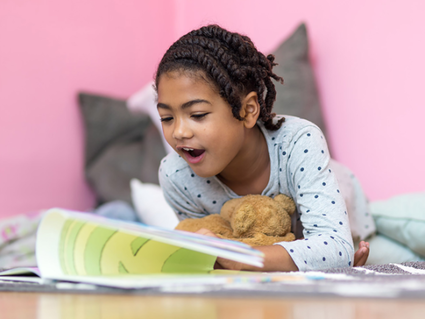
Not all mirror books need to be about a specific person who has achieved great things. Kids also need to see kids just like themselves doing ordinary kid stuff like visiting the library, going to the pool, and playing in the backyard. Highly relatable books allow kids to identify with the characters. It's validating for kids to meet a character in a story who has hair that resembles theirs or wears glasses just like they do. 3. It allows for connections to be built. When kids enjoy reading titles with characters who look like them, it helps form a connection to the book on another level. Identifying with the characters in a story allows for a deeper comprehension of the text because kids are making these kinds of self connections. That is not to say that all books must have characters that look like our kids. As Bishop says, books also act as windows into other cultures, allowing us to travel to other places and connect with others who are not exactly like us. Filling your kids' reading diet with books that act as mirrors and windows allows for a deeper and more well-rounded reading experience for them. Help your kids find titles where they see themselves, and beyond. Connect with Jodie Rodriguez on her site, Growing Book by Book Featured Photo Credit: © FatCamera/iStockphoto Article Courtesy: Scholastic Parents |
*********************************************************************************************************************************************************************************************************
|
"Kid in the Kitchen" -- A Book Review
Kid in the Kitchen: 100 Recipes & Tips for Young Home Cooks by Melissa Clark with Daniel Gercke, New York, Clarkson Potter Publishers, 2020. Kid in the Kitchen is sophisticated, and Melissa Clark’s tone is straightforward and never condescending or “cutesy.” It is probably better understood and appreciated by tweens and teens than elementary school-aged children. In fact, the use of the word “kid” in the title is unfortunate and a bit misleading since the word kid can imply young children. Younger children can make recipes from this book, but they would need more help from adults. The recipes are carefully explained, and Clark uses them to teach certain skills and to answer questions like why different brands of farro need different cooking times. The first few pages of the book are dedicated to a thorough explanation of techniques -- like whisking versus stirring, how to properly use a knife, and how to chop, in addition to a useful section on kitchen equipment and a ten-step “How to Cook Any Recipe.” |
And, because it is 2020, author Clark even offers food photography hints so young chefs can take better photos of the dishes they have cooked in order to post social media.
The recipes cover the usual ones typically found in children’s cookbooks like burgers, tacos, pancakes, and directions for hosting an ice cream party. However, Clark has modernized her book with recipes for currently popular dishes like Pho, sesame noodles, Pajeon (Korean scallion and vegetable pancake), Piccadillo (Latin American ground meat), grain bowls, and quick pickles. Clark even includes some of her famous “sheet pan meals” but doesn’t promote the use of any special equipment or appliance. Every recipe includes a “tips and tweaks” section to help young cooks adapt a recipe, and most recipes are accompanied by a photograph. The index is not perfect which, sadly, is all too common in newer cookbooks and making some dishes hard to find. Also, there are no suggested prep times – perhaps on purpose so as not to put pressure on young cooks to meet a preparation standard.
This is a very comprehensive cookbook for young cooks (and adults) looking for reliable, easy-to-use recipes. If you have a teenager looking to learn some elements of cooking, this is a great option.
Food writer and cookbook author Melissa Clark is a staff reporter for the New York Times “Food” section, where she writes the popular cooking column “A Good Appetite.” She lives in Brooklyn with her co-author husband, Daniel, and 12-year-old daughter, Dahlia. She has written over 40 cookbooks, and this is her first for children.
The recipes cover the usual ones typically found in children’s cookbooks like burgers, tacos, pancakes, and directions for hosting an ice cream party. However, Clark has modernized her book with recipes for currently popular dishes like Pho, sesame noodles, Pajeon (Korean scallion and vegetable pancake), Piccadillo (Latin American ground meat), grain bowls, and quick pickles. Clark even includes some of her famous “sheet pan meals” but doesn’t promote the use of any special equipment or appliance. Every recipe includes a “tips and tweaks” section to help young cooks adapt a recipe, and most recipes are accompanied by a photograph. The index is not perfect which, sadly, is all too common in newer cookbooks and making some dishes hard to find. Also, there are no suggested prep times – perhaps on purpose so as not to put pressure on young cooks to meet a preparation standard.
This is a very comprehensive cookbook for young cooks (and adults) looking for reliable, easy-to-use recipes. If you have a teenager looking to learn some elements of cooking, this is a great option.
Food writer and cookbook author Melissa Clark is a staff reporter for the New York Times “Food” section, where she writes the popular cooking column “A Good Appetite.” She lives in Brooklyn with her co-author husband, Daniel, and 12-year-old daughter, Dahlia. She has written over 40 cookbooks, and this is her first for children.
|
Marie Cavanagh is a librarian at the George Mason Regional Library in Annandale, Virginia. She coordinates a monthly book club called “Cook the Book!” where members cook from the same cookbook and discuss their results.
Marie tried the pancake recipe from the Clark book. "I wanted to try something super basic to see how they compared (to common pancake recipes). I wanted to weigh the ingredients instead of using measuring cups. Clark explains why (the pancakes) need to rest 10 minutes -- it makes them super fluffy, although they don't stay that way too long. Yes, I recommend them." |
